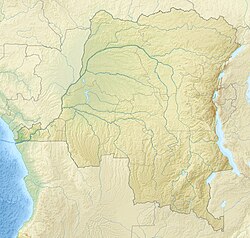| Maringa River | |
|---|---|
| Location | |
| Country | Democratic Republic of the Congo |
| Physical characteristics | |
| Mouth | |
• location | Lulonga River |
• coordinates | 1°13′43″N19°49′05″E / 1.228572°N 19.817963°E |
The Maringa river is a river in the Democratic Republic of the Congo. The Maringa, and the Lopori River to the north, join tBasankusu to form the Lulonga River, a tributary of the Congo River. he Maringa / Lopori basin contains the Maringa-Lopori-Wamba Landscape, an area of great ecological importance. [1] The Ngando people live in the Maringa River area north of Ikela. [2]
